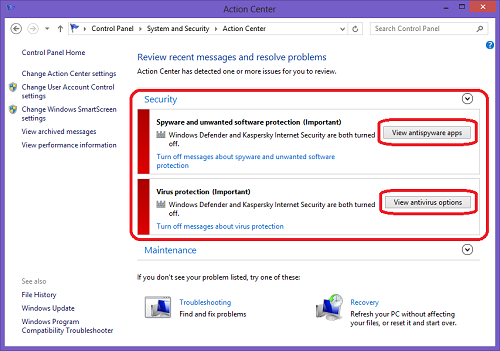
Windows Defender in Windows 8 is a comprehensive antivirus and antimalware solution designed to protect your PC against various threats, including viruses, spyware, and other malicious software. It comes pre-installed with Windows 8 and provides real-time protection, automatic updates, and various scanning options to keep your system safe and secure. In this extensive guide, we’ll delve into everything you need to know about using Windows Defender in Windows 8, from understanding its features to configuring settings and performing scans effectively.
Understanding Windows Defender:
Windows Defender is an integrated security solution included with Windows 8 that helps protect your PC from viruses, spyware, and other types of malicious software. Here are some key features of Windows Defender:
- Real-Time Protection: Windows Defender continuously monitors your system for malicious activity and provides real-time protection against threats.
- Automatic Updates: Windows Defender automatically updates its malware definitions and engine to ensure that your PC is protected against the latest threats.
- Scheduled Scans: You can schedule regular scans to check your system for malware and other potentially unwanted software.
- Quarantine: Windows Defender quarantines suspicious files and programs, preventing them from causing harm to your system while allowing you to review and take action if necessary.
- Integration with Windows Security Center: Windows Defender integrates with the Windows Security Center, providing a centralized location for managing security settings and monitoring the overall security status of your PC.
Now, let’s explore how to use Windows Defender effectively in Windows 8:
Accessing Windows Defender:
- From the Start Screen: Type “Windows Defender” on the Start screen, then click or tap on the Windows Defender app to open it.
- From the Desktop: Open the Control Panel, navigate to “System and Security,” and then click or tap on “Windows Defender.”
Using Windows Defender:
- Home Screen: The Home screen of Windows Defender provides an overview of your PC’s security status, including protection updates, scan options, and settings.
- Scan Options: You can perform various types of scans using Windows Defender, including Quick Scan, Full Scan, and Custom Scan. Choose the scan type based on your needs and preferences.
- Update Definitions: Ensure that Windows Defender is up to date by clicking or tapping on the “Update” tab and then selecting “Update definitions.” This will download and install the latest malware definitions and engine updates.
- Scheduled Scans: Schedule regular scans by clicking or tapping on the “Settings” tab, selecting “Scheduled scan,” and then configuring the scan frequency and time.
- Quarantine: Review quarantined items by clicking or tapping on the “History” tab, selecting “View details,” and then reviewing the list of quarantined items. You can choose to remove or restore items as needed.
Configuring Windows Defender Settings:
- Real-Time Protection: Adjust real-time protection settings by clicking or tapping on the “Settings” tab and then selecting “Real-time protection.” Here, you can enable or disable real-time protection and configure advanced settings.
- Cloud-Based Protection: Enable cloud-based protection to enhance Windows Defender’s ability to detect and block new and emerging threats.
- Exclusions: Exclude specific files, folders, or file types from Windows Defender scans to prevent false positives or conflicts with trusted applications.
- Automatic Sample Submission: Choose whether to automatically send sample files to Microsoft to help improve Windows Defender’s detection capabilities.
Best Practices for Using Windows Defender:
- Keep Windows Updated: Ensure that Windows Update is enabled and set to automatically download and install updates to keep your system and Windows Defender up to date.
- Be Cautious Online: Exercise caution when downloading files or clicking on links from unknown or untrusted sources to avoid malware infections.
- Stay Informed: Stay informed about the latest security threats and best practices for staying safe online by regularly checking Microsoft’s security advisories and updates.
- Regular Scanning: Schedule regular scans with Windows Defender to check for malware and other threats, and consider performing additional scans if you suspect your PC may be infected.
Conclusion:
Windows Defender in Windows 8 is a powerful and reliable security solution that helps protect your PC against viruses, spyware, and other types of malicious software. By understanding its features, configuring settings, and following best practices for using it effectively, you can enhance the security of your system and keep your PC safe and secure. Whether you’re performing scans, updating definitions, or configuring settings, Windows Defender provides the tools and capabilities you need to defend against threats and maintain a secure computing environment in Windows 8.